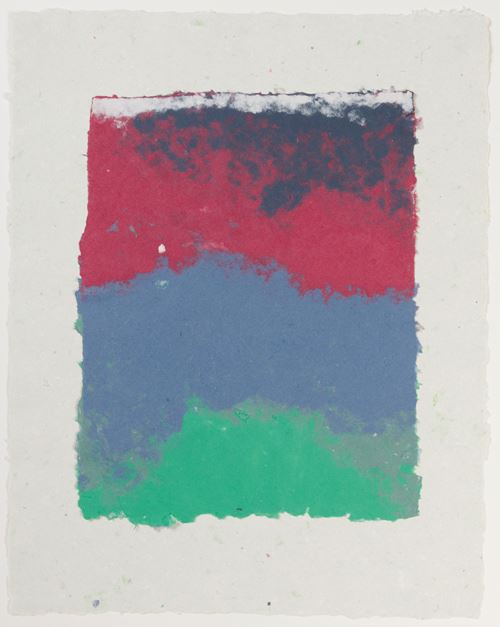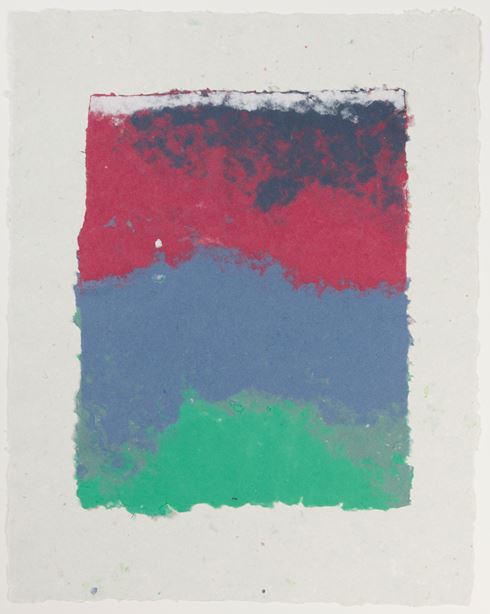
Kenneth NOLAND
Asheville 1924 - Port Clyde 2010
Biography
After serving in the U.S. Air Force during the Second World War, Kenneth Noland studied at Black Mountain College in North Carolina on the G. I. Bill, which also allowed him to travel to Paris in 1948. There he studied with Ossip Zadkine and was exposed to the work of Picasso, Matisse and Miro, and he also had his first one-man show at the Galerie Raymond Creuze. On his return to America Noland taught at Catholic University in Washington, D.C., and met the older artist Morris Louis, who became a close friend. In 1953 Louis and Noland paid a visit to Helen Frankenthaler’s New York studio, and influenced by her technique of pouring thinned paint onto unprimed canvases, became pioneers of colour-field abstract painting in Washington. Included in a number of important group shows in the mid-1950s, Noland had his first solo exhibition at the Tibor de Nagy Gallery in New York in 1957. The importance of his work was emphasized by his inclusion in the seminal 1964 exhibition Post-Painterly Abstraction, curated by Clement Greenberg, which firmly established the colour field movement as a significant development in American abstraction. Also in 1964, Noland was one of several artists chosen for the American pavilion at the Venice Biennale, along with Morris Louis, Jasper Johns, Robert Rauschenberg, Frank Stella, Claes Oldenburg, and several others.
In 1977 a major travelling retrospective exhibition of Noland’s work was organized by the Solomon R. Guggenheim Museum in New York. As the New York Times art critic Hilton Kramer noted of the exhibition, ‘Mr. Noland is one of the artists who have decisively shaped American painting - or at least some very important elements of it - over the last 20 years...no matter what the size or shape of his pictures, Mr. Noland has been consistent and unvarying - not to say single‐minded - in his artistic purpose, which has been to fill the canvas surface with a pictorial experience of pure color…An art of this sort places a very heavy burden on the artist’s sensibility for color, of course - on his ability to come up, again and again, with fresh and striking combinations that both capture and sustain our attention, and provide the requisite pleasure. In this respect, at least, Mr. Noland is unquestionably a master.’
Noland may indeed be regarded as one of the great colourists of the 20th century. His method involved staining the canvas with colour, rather than using a brush. Working on a large scale, he produced canvases characterized by simple patterns of chevrons, stripes, and concentric circles or targets painted in bold blocks of colour, as well as shaped canvases, which became asymmetrical in the 1970s and 1980s. Admired for his significant contribution to American abstraction, Noland’s works are found in numerous international museums.


